Related Content
Content
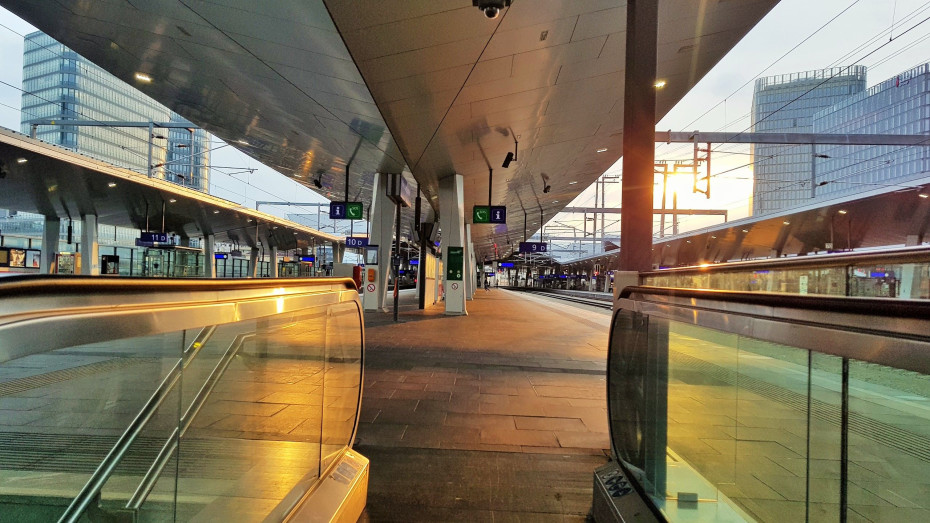
Share
It is often assumed that the greatest time to take a train journey through Europe was during the 1920s and 30s.
But the stark reality at that time was that the film star aura of the likes of The Orient Express, were as beyond the reach of virtually all travellers, as their revived equivalents are today.
At its launch a ticket to ride The Golden Arrow and then take a boat and luxury train on to Paris, cost the equivalent of more than £300; all very wonderful, but I'm glad I can now get to the French capital more than 3 x faster and at less than 50% of that cost.
Then in post-war Europe, the T.E.E trains perpetuated a sense of glamour for international train travel.
But those then contemporary luxuries, such as air-conditioning and at-seat catering, came at an exclusive first-class only price; travellers opting for second-class tickets often had no option but to stumble across Europe on combinations of alternative, much slower trains.
The coming of the high-speed era
The dawn of the age of the high-speed train inevitably transformed rail travel for the better; provided you happened to be making a direct journey between two cities served by a high-speed line.
However, because high-speed trains could match or better the travel times of an end-to-end journey by plane, this cast a shadow over the day and night trains, which still snaked across Europe on longer routes.
So high-speed trains arguably didn’t herald a new golden era of international rail travel, particularly in western Europe.
Many of the new journey opportunities they offered were mirrored by the corresponding loss of a long-standing conventional rail travel option; the opening of the high-speed line between Perpignan and Barcelona was a factor in the cancellation of the direct day and night trains between Switzerland and Spain, as one example.
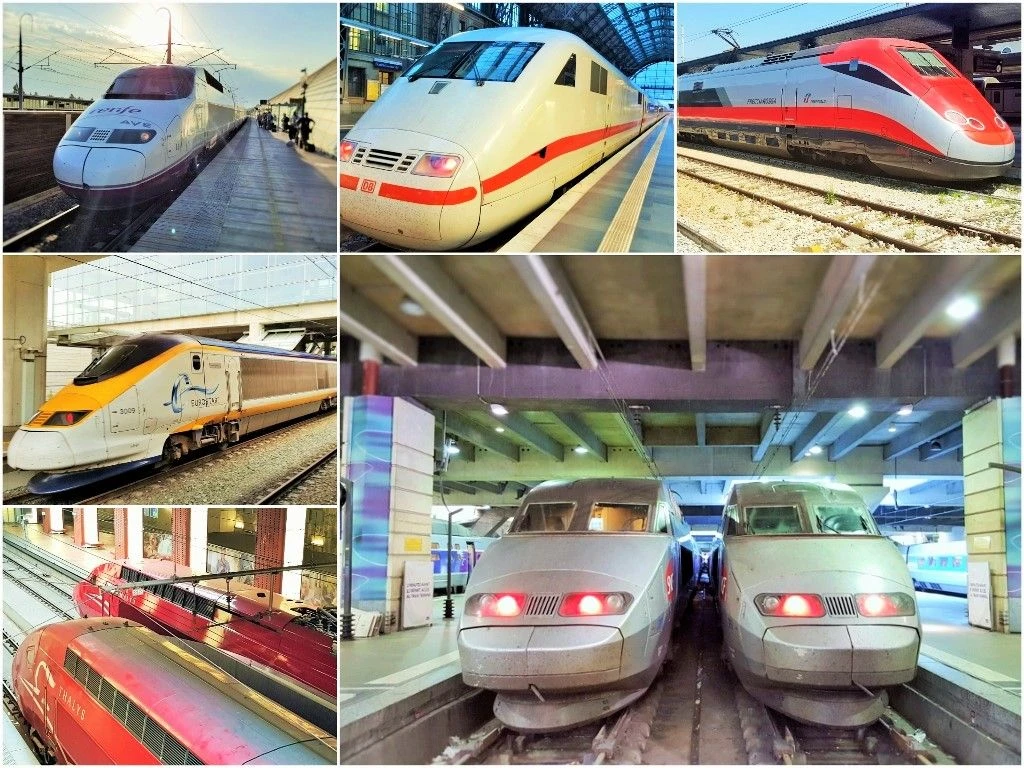
The arrival of Eurostar
Similarly the launch of the Eurostar led to the removal of trains that had met the ferries from Britain in Oostende and then conveyed travellers on to the likes of Wien, Warszawa, Hamburg and Zurich via Bruxelles.
High-speed trains from the UK didn’t then link into trains on to those distant destinations, when they arrived in the Belgian capital, because they had disappeared.
Now, one of the most evident signifiers of rail travel’s recent revival is that, for the first time in over 20 years, it has once again become possible to travel between London and Austria by train with only one connection required (in Bruxelles).
What has brought about this current golden age?
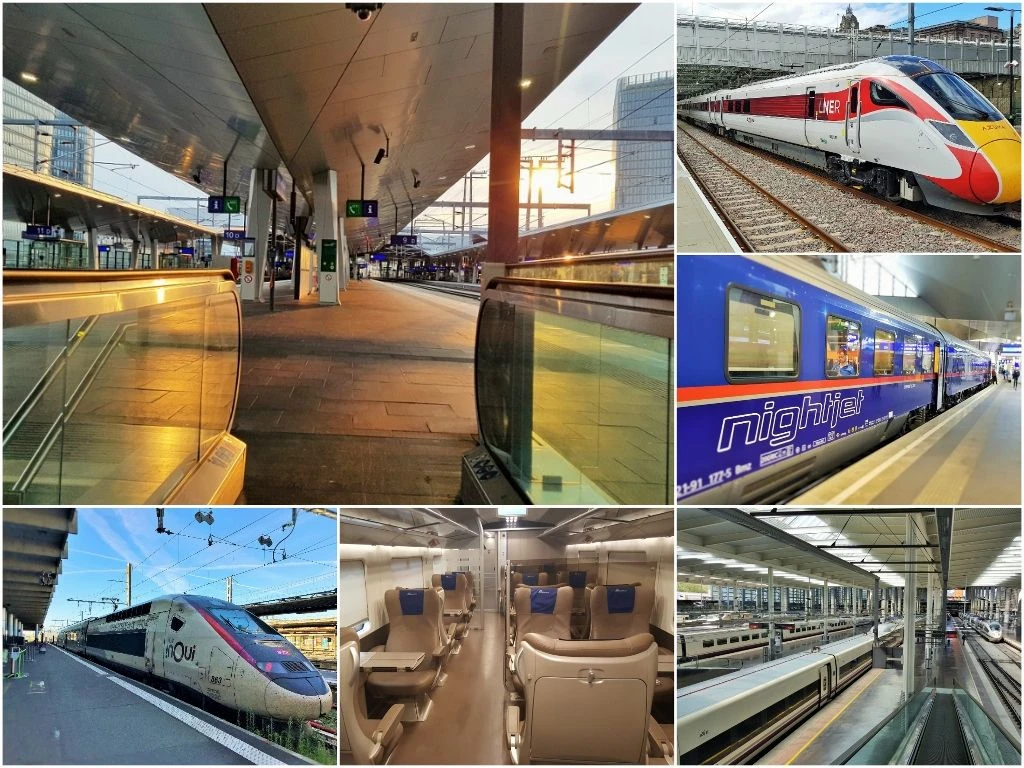
What has made the timetables of recent years so special is that the opportunities to take high-speed trains across Europe, has been complimented by a surge of new and revived routes taken by conventional express day trains.
In addition to this, the Nightjet network, which has restored night trains to numerous routes across Western Europe, has continued to expand, while the number of regional and local trains crossing borders has also risen.
Enhancements and new rail travel opportunities have continued to thrive despite the pandemic.
It's true that a few long-standing routes and services were discontinued, but the cancellation of the direct trains between Milano and the French Riviera and the loss of the night trains on the routes between Spain and Lisbon, and that between Venezia and Paris, have been offset by the recent launches of multiple new and enhanced services:
- Paris is now connected to Wien by night trains; as is Amsterdam with Munchen, Wien and now Zurich.
- Paris is also now connected to Berlin by high speed ICE trains.
- Direct trains link Switzerland with both Bologna and Genova.
- There are direct trains on an incredible three country route between Wien and Trieste.
- There are more high speed trains than ever before which travel the length of Italy and provide enhanced connections to and from Sicily.
- There have never been so many daily trains available between Paris and Milano on a spectacular route via Torino.
- Yet another part the Spanish high-speed network has opened.
- The launch of direct trains between Stockholm and Berlin.
- The transformation of the München ↔ Zurich route.
- A new Railjet service which connects the beautiful Bodensee to both Frankfurt (Main) and Wien.
And these are solely the major innovations.
A Dramatic Revival
Back in the winter of 2010, I holidayed in charming Vicenza, but the city’s eternal beauty wasn’t the sole reason for choosing that location. I was spending time there because it was also the perfect base from which to explore the best of northern Italy by rail.
However, at the time getting there by train was compromised because Vicenza was served by just two international rail services; a daily EuroCity (EC) to and from Geneve and the night train on the Paris <> Venice route (which has now become one of the remarkably small number of services that was permanently withdrawn, as a consequence of the pandemic).
This situation had come about due to Italy being deprived of most of its international rail links a few years previously.
At the time being a tourist magnet hadn’t saved Venice from losing its daytime trains to Germany and all of its direct rail services to Hungary and Slovenia.
The long-standing trains between Venice and Austria had also been replaced by buses provided by the railway companies.
Added to this, Milano had also lost its trains to Germany and Spain, as well as the long-established rail link between northern Italy and the south of France.
Those cross-border services from Italy weren’t exceptional: Krakow was another example of a city popular with tourists which had lost virtually all of its direct international rail services, including its daytime express trains to Berlin, Prague and Vienna.
The nadir was reached in December 2016 when City Night Line, the at the time provider of the majority of central Europe’s overnight trains, shut down most of its network.
But European rail travel has since been transformed!
Since that low point, there has been a veritable renaissance of rail travel across Europe.
Swathes of travellers had taken to the trains across the continent, from Austria to the Netherlands; with sales of Eurail and Interrail passes reaching new heights, and this boom in rail travel has been partially enabled by the reversal of many of those cuts to international services mentioned above.
Since my visit in 2010, Vicenza has gained, on average, one or two trains per day to Munich, a daily train to Zurich and an overnight service to Wien/Vienna; and this is a revival that has been mirrored elsewhere.
Those international rail links to and from Krakow have returned, along with more trains from Venezia/Venice to both Munich and Wien than ever before, while Milano has regained its train services to central Germany.
The resurgence continued
Larger cities have experienced an even more dramatic resurgence in international rail connections.
Wien/Vienna has benefitted from new daytime rail links with cities in southern Poland, to Kosice in Slovakia, an additional service to Venice and a new service to Bolzano in northern Italy.
Meanwhile, every 24 hours, four train services link the German and Austrian capitals (just five years ago there were none).
One of those services is due to the Berlin ↔ Wien/Vienna via Dresden and Praha/Prague route being revived with the launch of a new Railjet service.
This welcome addition to the timetables occurred less than 24 hours after Germany re-opened its borders in 2020, and is a beacon of hope indicating that international rail travel will continue to thrive.
Furthermore, thanks to the remarkable success of the relatively new Nightjet network, Austria’s capital has also had its overnight connections with multiple cities restored, including Berlin, Bruxelles and Milano.
New And Better Journey Options 2018 - 2023
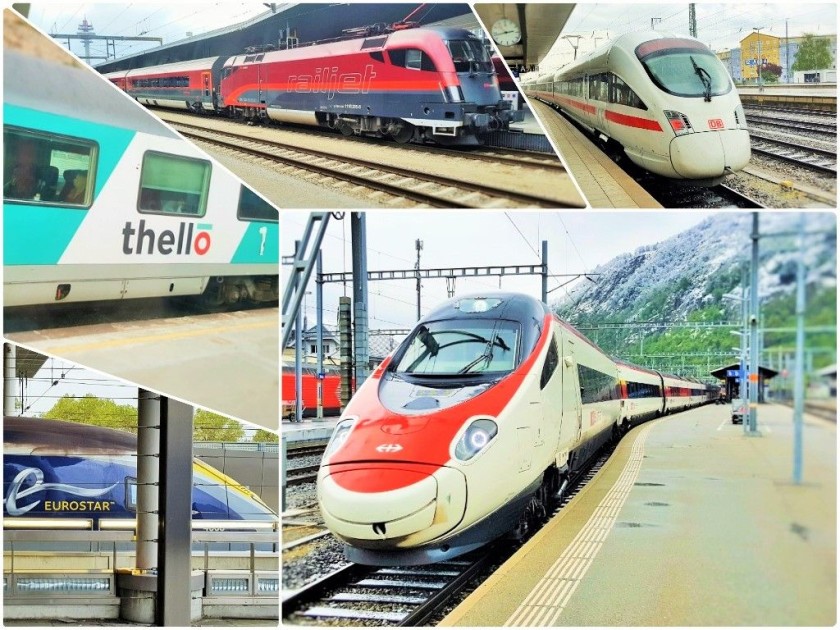
Encouragingly, over the past three years, the volume of new and restored international rail links on the annual major timetable change in early December has been far greater than the lists of terminated services.
A summary of the other, welcome fairly recent additions, include the services on these routes:
2. London to Amsterdam by Eurostar
3. A new Berlin <> Wien/Vienna route via Nurnberg and Linz – exploiting the opening of a high speed line in Germany
4. Praha/Prague <> Krakow restored
5. The ‘Celta’ services on the Vigo <> Porto route
6. Direct day and night trains between Paris and Berlin
7. A night train service between Stockholm and Berlin.
Back in 2019, European train travel took a leap forwards with hugely exciting additions to the to the timetable, which would then run for most of 2020 − with yet more of those long wished for, once lost services, being revived, including
- A new Nightjet service has restored Belgium to the European night train network
- Berlin’s overnight link to south-east Poland was restored, including a new connection on to Ukraine.
- Liverpool once again had direct trains to and from Scotland.
- For the first time, it is possible to board a train in Amsterdam and alight from it in London!
The transformation of other established services
Yet another new high-speed line in Spain means that Barcelona has its faster ever services to Alicante and Valencia, while many of Britain’s most picturesque cities and towns, including Harrogate, Lincoln and Worcester have never previously had such frequent rail links with London as now.
Other planned innovations, such as Europe's longest journey by high speed train have also gone ahead.
These were followed by the restoration of overnight trains to/and from Amsterdam.
Positivity is also beginning to build around ideas for the future, such as direct London <> Bordeaux trains; more overnight trains from both Sweden and Switzerland; and a transformation of the Lisbon <> Madrid route.
Those long-distance services steal the headlines, but many cross-border local and regional services have also experienced a renaissance in recent years, enabling canny Eurail and Interrail pass users to save money by avoiding the more expensive rail pass reservation fees.
Local and regional routes transformed for the better include:
- More trains and better connections when travelling between Port Bou in Spain and Cerbere in France on the Mediterranean coast.
- The trains between Milano and Locarno, which connect in Cadenazzo to newly restored services between there and both Basel and Zurich.
- The long-awaited reopening of the link between Geneve and the Haute-Savoie region of France.
This new golden age of European rail travel had to be temporarily paused, but it’s good to see that train operators have evidently restored the vast majority of their services.
Most of the new, enhanced and revived rail services listed above were proving to be highly successful and the infrastructure required to support them; the stations, trains and railway tracks, obviously haven’t disappeared.
New and improved trains
The restoration of many international rail links in recent years isn’t the only thing contributing to the renaissance of European rail travel. The infrastructure, the trains and the stations, have also continued to evolve.
In the past five years there has been a surge in the arrivals of new trains with improved passenger facilities, such as the:
- ICE 4 and IC 2 in Germany
- TGV Oceane in France
- LD Twindexx IC trains in Switzerland
- Giruno trains between Italy and Switzerland
- Eurostar e320
- Frecce 1000 trains and the Frecce 700 trains in Italy
- Azuma and the IC Express and the Nova trains in Britain.
Furthermore, older trains, such as Thalys trains, the Italian IC trains, the EuroCity trains to/from Czech Republic and the Inter7City services in Scotland, have had brand new interiors fitted for increased comfort.
This wave of new trains is still coming and, by 2025, there will be better facilities than ever before on these routes (and many more):
- Barcelona <> Lyon and Paris
- Hamburg <> Copenhagen
- Amsterdam <> Berlin
- Bruxelles <> Amsterdam via Breda
Along with highly innovative new coaches that will be introduced on the Nightjet routes, which will have a transformative effect on overnight train travel.
Better stations
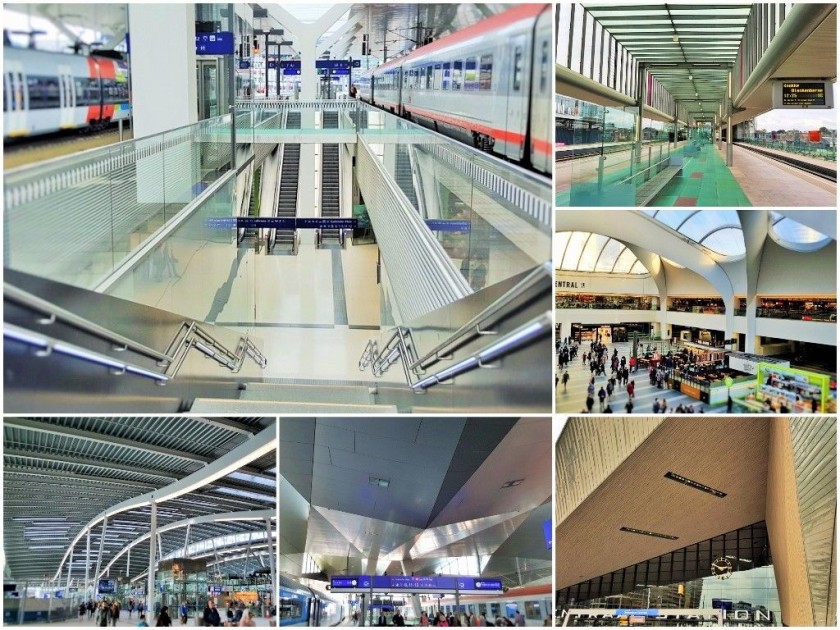
Passenger facilities and transfers to and from the trains at stations are also continually being transformed for the better across Europe.
During the past five years, a swathe of previously awkward to use stations have in effect been reconstructed or wholly replaced, including Wien Hbf, Salzburg hbf, Edinburgh Waverley, Gent-Sint Pieters, Glasgow Queen St, Birmingham New Street, London Bridge, Krakow Glowny, London Kings Cross, Napoli Centrale, Reading, Rennes, Rotterdam and Utrecht.
Other major stations currently at various stages of transformative reconstructions include, Lyon-Part Dieu, Munchen Hbf, Paris Gare Du Nord and Stuttgart hbf, and these are just the show-stoppers.
Countless other stations now benefit from additional elevators, escalators, shopping facilities and enhanced travel information.
New engineering
New feats of engineering which have already opened, or will also be completed in the near future, will have a transformative effect on the trains that will use them.
For example, the rail service between northern Switzerland and Milano has taken another leap forwards due to the opening of the Ceneri Base Tunnel.
Exploring the beauty of Switzerland by train will be enhanced with new technology enabling direct trains to connect Montreux to Interlaken via ‘The Golden Pass route’; a Montreux <> Luzern journey will then require just one simple change of train!
Furthermore, additions to the Spanish high-speed network will soon enter service, and the new higher speed route in Denmark will be fully operational; and these are just a few examples of the exciting steps being taking to modernise the European rail network.
Looking to the future, work is progressing on a swathe of €multi-billion transformative projects including:
- HS2 in the UK;
- the next stages of the high speed line between Milano and Venezia;
- the new station for Stuttgart and its connection by high-speed line with Ulm;
- the Koralm railway in Austria;
- the Fehrmanbahn Link between Denmark and Germany.
Ticketing improvements
New ticketing services already mean that the booking of international journeys involving multiple trains, are as simple as buying tickets for a direct London to Paris trip.
These new services, coupled with innovations such as Germany’s decision to suspend VAT on the sales of train tickets and reservations, will be permanent and hopefully set a pattern to be emulated.
Using Eurail and Interrail has also become simpler
Eurail and Interrail pass users have inevitably been able to benefit from the new rail links, trains and stations, but what has been a game-changer is the transformation for the better of how these passes can be bought and used.
- Fixed reservation fees on Eurostar and Thalys services.
- More Swiss independent railways included (along with the opportunity to only pay a reservation fee on the Glacier Express).
- Most overnight journeys now only consuming one day of pass use, instead of two.
These innovations, allied to the increase in the range of passes available and the addition of newly valid countries, had all contributed to a surge in sales and interest in rail passes; not to mention the fact that rail travel is now also seen as ‘eco-friendly.
Those timetable additions, that have made it easier to follow a pan-European itinerary by train, will hopefully be retained, as they show up on the travel planning apps used by rail pass customers and prompt thoughts along the lines of ‘ah, so I can go by train from Italy to Croatia via Slovenia’…
Looking to the future
Taking a train to a beautiful destination could, in time, become a more desirable notion for many people who wouldn’t have previously considered doing so.
Fortunately, relatively few major rail engineering projects were impacted by the lockdown. No high-speed lines used by international services were due to open in 2020-2021, so plans for new, transformative services didn't have had to be placed on hold.
As there will be relatively few new high-speed lines available to harness changed attitudes to air travel, it may make the full exploitation of existing infrastructure imperative.
Research is already a suggesting a greater willingness to travel by train, with tolerance for rail travel times rising to more than four hours.
More opportunities for new, direct journeys?
Those newly introduced services mentioned above are particularly welcome because they enable direct journeys to be taken.
So it could be hugely beneficial to changing traveller perceptions, if new transformative direct journeys by high-speed train could be introduced, on routes which wouldn't require significant expenditure.
Such routes could include:
- London <> Koln
- Berlin <> Bruxelles
- Amsterdam <> Munich by daytime ICE trains
- Zurich <> Roma (though an overnight service is launching in December)
- Paris – Strasbourg – Frankfurt – Leipzig – Berlin
- Bruxelles <> Zurich via Lille and Dijon (which, with the connection available in Lille, would transform journeys between London and Austria, Italy and Switzerland).
Are any of these proposals really more outlandish than having Marseille linked by daily TGVs to Frankfurt; an innovation that has been hugely successful.
Any significant reductions of the volume of cross-border rail travel opportunities at the next major timetable update in December, could be detrimental to long-term perceptions of pan-European rail travel.
Hopefully, the enabling of long-distance international rail journeys to be less and not more complicated will still drive travel service provision, because exploring Europe by train was, is and will be a truly wonderful thing!

Simon Harper
I wanted to share my passion for train travel and explain how anyone can take the fantastic journeys I have taken.

This is one of more than 100 train travel guides available on ShowMeTheJourney, which will make it easier to take the train journeys you want or need to make. As always, all images were captured on trips taken by ShowMeTheJourney.
This second version of ShowMeTheJourney is exciting and new, so we are genuinely thrilled that you are here and reading this, but we also need your help.
We’re striving not to let anything get in the way of providing the most useful service possible, hence a facility has been set up with DonorBox which can be used to support the running costs and make improvements.
Instead of advertising or paywalls, your financial support will make a positive difference to delivering an enhanced service, as there’s a lot of ideas which we want to make happen.
So if you have found the info provided here to be useful, please consider saying thank you.




